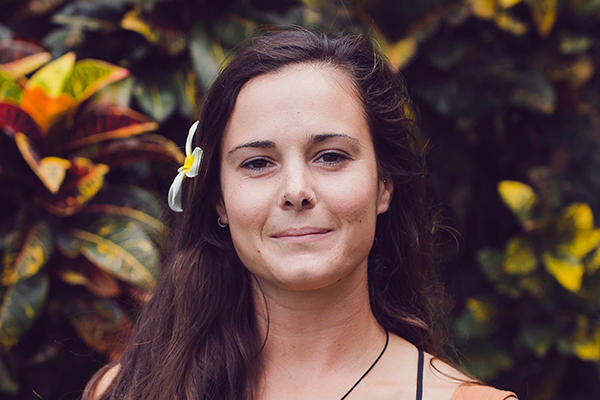
By Lisa Bakewell
Rachelle Caron was one of the winners of ABMP’s Massage is for EveryBody 2021 contest, and we wanted to share more of her story. Please join us in celebrating Rachelle!
“There is no one way to treat trauma during a session,” says Rachelle Caron, massage therapist at Divine Touch, located in Maui, Hawaii. “It’s important to meet clients where they are, address their specific needs, and create a safe healing environment for them.”
From children diagnosed with sensory disorders to clients with special needs to new mothers, Caron’s clientele come with an array of life experiences—including trauma, life changes, and physical, developmental, medical, and mental challenges. Many of her clients are also on medications because of these challenges, which can produce horrible side effects, such as constipation, insomnia, anxiety, and depression. “Providing them touch therapy—if nothing else—can aid in calming their nervous system, reduce stress hormones, and provide an opportunity for relaxation,” she says, “but it can also have huge benefits, such as increase/decrease muscle tone, increase motor skills, prevent atrophy of paralyzed areas, and improve one’s body image and feelings of isolation.”
Caron believes massage therapists can help clients who have experienced trauma by using Trauma Touch Therapy. “By helping them feel all their emotions and sensations, while [also] staying present in their experience with touch therapy, I can help them release trapped traumas stuck in their bodies.”
She explains that Trauma Touch Therapy sessions are typically done on a massage table, chair, or wherever the client is most comfortable—with the client fully clothed. Depending on the situation, the massage therapist may work with other therapists, such as psychologists, mental health counselors, and other professionals. By using slow, soothing, and grounding touch techniques, Caron hopes to decrease anxiety levels and improve client focus and concentration, which helps them get back into their body, begin to see how their body moves, and/or how they should move in their environment.
“One self-soothing technique I like to use includes self-massage in areas where [the client] enjoys touch. This could be their temples, hands, or feet. Also, some children enjoy different textures—rough or silky, for example. I encourage them to use whatever feels good,” she says.
“Take 5 is another great self-care example. Have [the client] spread one of their hands. They then take the pointer finger of their other hand and trace the spread hand, taking in deep breaths as they move up, exhaling deep breaths as they move down. This [allows them] to stay present and feel their body in their surroundings, while calming their nervous system.”
Caron also volunteers at La’akea Village, a community where youth and adults with disabilities can work, learn, and live. Twice each month, Caron provides four 45-minute massages to interested residents. “At La’akea, special needs participants experience an inclusive life, sharing a setting where they engage in a healthy and productive lifestyle,” she says. “Some clients I work with are vocal, others I communicate with through body language and gestures, but I always make sure to receive their consent, and meet them where they are—developmentally, physically, and emotionally. I’ve had some amazing breakthrough experiences with clients who have a hard time receiving touch—even from people close to them. It has brought me much joy volunteering and working with these clients.”
Caron is also an advocate for postpartum mothers. “The postpartum time in a new mother’s life can come with challenges,” she says. “There can be many highs and lows all at the same time. I find women are too worried trying to take care of their newborns, that they don’t take time for themselves. A woman who doesn’t take time to heal her body and mind after birth can have a hard time providing the best care for her child.”
When asked what her plans are moving forward in her massage therapy business, Caron finds the question hard to answer because she has so many interests. “I do know I would like to have my own studio one day,” she says. “A safe space that is appealing to women, children, and their families—working specifically with special needs, trauma, and postpartum care. I will continue to educate myself in trauma and somatic healing, as well as hoping to connect with more therapists in other fields so we can bring our expertise together to provide the best care possible.”